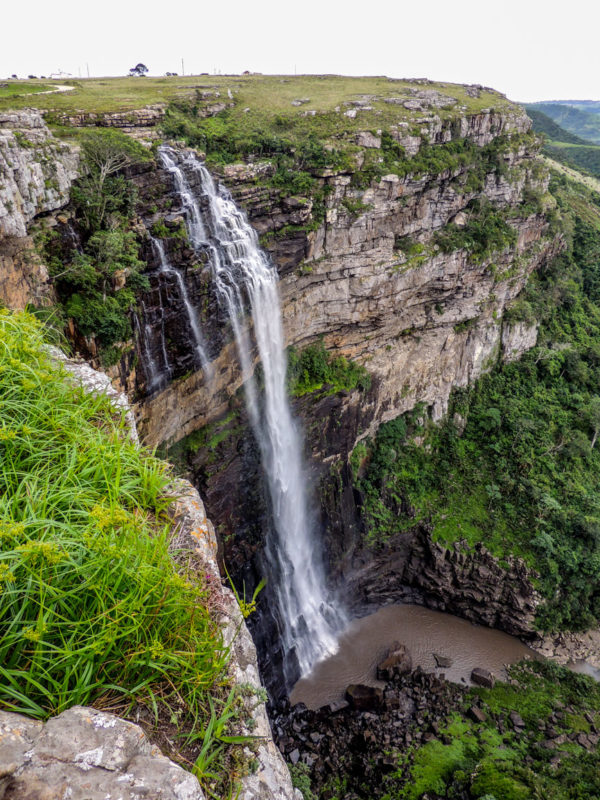The Pondoland Wild Coast area contains several spectacular waterfalls, including the well-known 142m Magwa Falls and the 60m Waterfall Bluff.

South Africa’s second–highest waterfall is in the Eastern Cape. This is the professional opinion of surveyors and engineers working on SANRAL’s N2 Wild Coast Road’s Msikaba Mega Bridge site near Lusikisiki.
Until the N2 Wild Coast Road project, very little was known about the Ntentule Falls on the Mateku River 20km east of Lusikisiki.
Surveying done by SANRAL reveals that the height of the falls is 175metres.
This places Ntentule Falls second after the country’s highest waterfall, the Tugela Falls (947m) in the Drakensberg in KwaZulu-Natal.
Elands River Falls in Mpumalanga becomes the third–highest waterfall (150m) in South Africa after Ntentule.
Waterfalls in Pondoland
SANRAL project leader for the N2 Wild Coast Road (N2WCR) greenfield section, Craig McLachlan, explained that the Pondoland Wild Coast area contains several spectacular waterfalls, including the well-known 142m Magwa Falls and the 60m Waterfall Bluff.
“When various internet searches failed to provide much information about the waterfall on the Mateku River close to the site where the new Msikaba gorge mega bridge is being built, I requested the engineer’s site surveyor to measure the height of the falls.
“When the answer came back that the falls are 175,4m high I realised that the little known Ntentule Falls, as it is called locally, is the second–highest waterfall in South Africa – higher than the 150m Elands River Falls in Mpumalanga,” said McLachlan.
The high local rainfall means that, unlike the Tugela Falls, the Ntentule Falls are usually flowing and visible all year round, and not only after heavy rains.
The top half of the falls will in fact be visible directly from the new N2WCR, while a short-surfaced detour will bring visitors to the top of the falls with a spectacular view over the falls, the nearby Msikaba gorge and the new Msikaba cable stay bridge.
“There is something deeply spiritual or mystical evoked by waterfalls and we believe that a Wild Coast ‘waterfall route’ could be a great added tourism attraction,” said McLachlan.
“Over the next few years SANRAL will be working with provincial, municipal, traditional and local stakeholders to help develop a sustainable, conventional, adventure and eco-tourism legacy once the new N2WCR is opened,” said McLachlan.
Unlocking economic growth
The N2WCR project is a significant economic investment by government to stimulate economic growth in the KwaZulu-Natal and Eastern Cape provinces.
It is a key Strategic Integrated Project (SIP 3: South Eastern node and corridor development) endorsed by the Presidential Infrastructure Coordinating Commission (PICC).
The project will unlock tourism and agriculture opportunities for the people of Pondoland.
Over 8000 full-time equivalent direct jobs and 16-18 000 indirect jobs will be created during the construction phase of the project.
There will be nine major construction projects over the 112km road; including the two mega bridges (Msikaba and Mtentu).
The project provides a major opportunity for the development of local targeted enterprises (SMMEs).
Over 30% of the project spend – over R2.8bn – will be directed to SMME contractors and suppliers.
The bulk of this (over R1.8bn) is expected to flow to SMMEs from OR Tambo and Alfred Nzo Districts, particularly those from Port St Johns, Ingquza Hill and Mbizana local municipalities.

